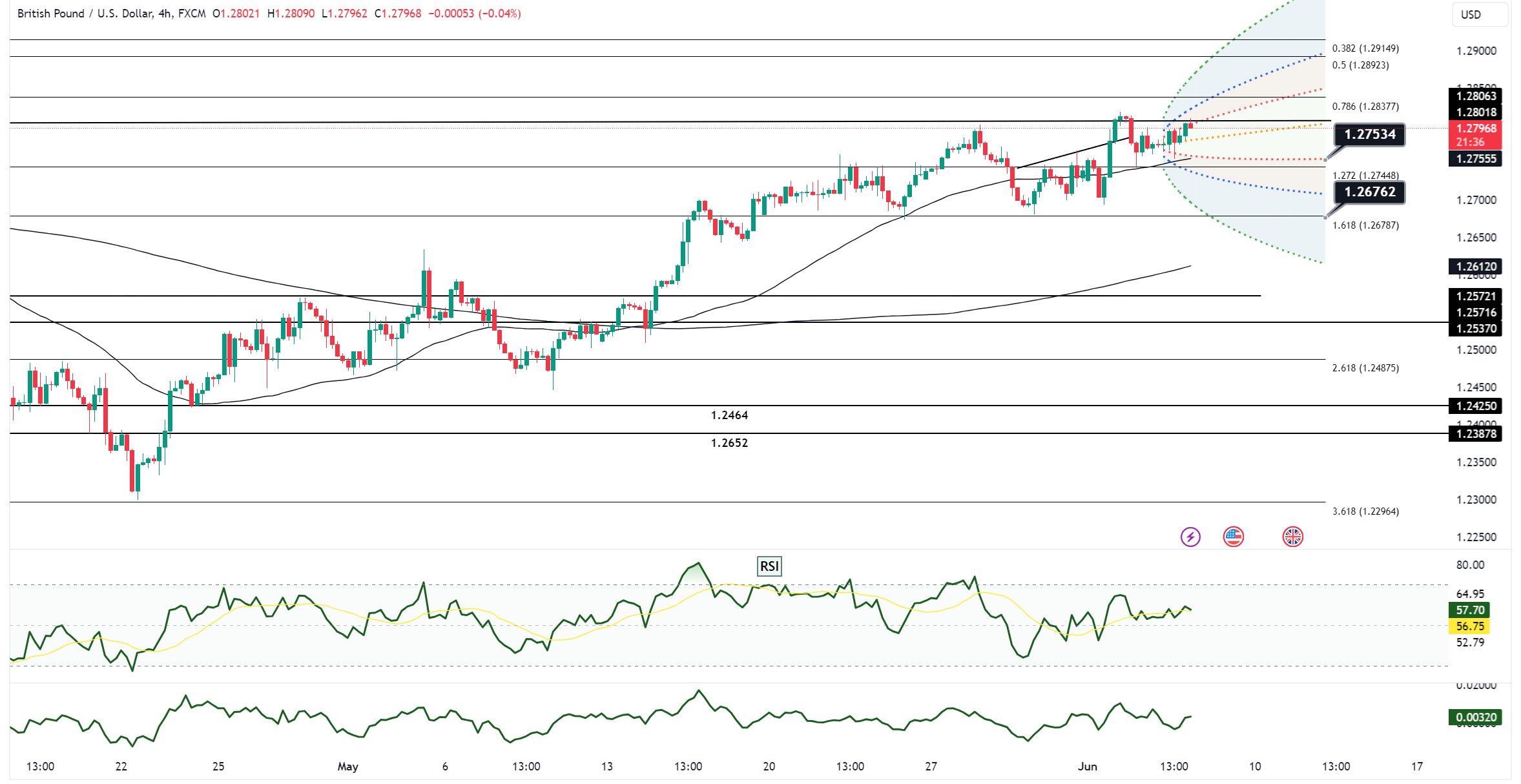GBP/USD Rises on Soft U.S. Data, Eyes Key Resistance Amid Fed and BoE Rate Speculations

The GBP/USD pair experienced a significant rise to a session high of 1.2795, positioning itself to potentially test the recent trend high at 1.2818. This upward movement was largely driven by below-forecast U.S. ADP data, which suggested that U.S. inflation might be moving towards the Federal Reserve's 2% target more swiftly than anticipated. Such a scenario could pave the way for faster and deeper-than-expected rate cuts by the Fed. The U.S. dollar's relative weakness can be attributed to Federal Reserve officials, led by Chair Jerome Powell, taking potential rate hikes off the table. Adding to the dollar's struggles were less dovish UK Consumer Price Index (CPI) data and Bank of England (BoE) rhetoric that pushed expectations for early UK rate cuts further into the future. LSEG's IRPR now indicates nearly 60% odds for a September rate cut, a significant shift from June being on the table in early May before the above-forecast UK CPI on May 22. Despite this, GBP/USD appears to be capped just above 1.28, with the 2024 high at 1.2894 being a notable resistance level. However, the recovery of 2024 Fed rate-cut expectations to -46 basis points from -35 basis points in May suggests that this resistance could be challenged if upcoming U.S. data continues to disappoint. Should the U.S. data remain soft, GBP/USD bulls may test recent trend highs, potentially aiming for the July 2023 highs around 1.30.
Sterling bulls have backed away from the 1.28 level once again, with the currency remaining flat at 1.2772 in the New York afternoon session, trading within a range of 1.2798 to 1.2756 on Wednesday. Resistance at 1.28 remained intact following the post-ADP test, as the ISM Non-Manufacturing index came in above forecast, sparking a USD bid into the North American close despite a dip in U.S. Treasury yields. The focus now shifts to upcoming U.S. jobless claims on Thursday and payrolls data on Friday, ahead of the Federal Open Market Committee (FOMC) meeting on June 12. For GBP/USD, immediate resistance levels include the Wednesday high of 1.2798, the June 4 high of 1.2818, and the year-to-date high of 1.2894 from March 8. On the downside, support is seen around the rising 10-day moving average (DMA) at 1.2750, Tuesday's low of 1.2743, and the 21-DMA at 1.2685. Sterling traders will closely watch these levels as they navigate through the mixed economic signals and central bank expectations, which continue to drive volatility and trading opportunities in the GBP/USD pair.
Open an account today to unlock the benefits of trading with CMS Financial

